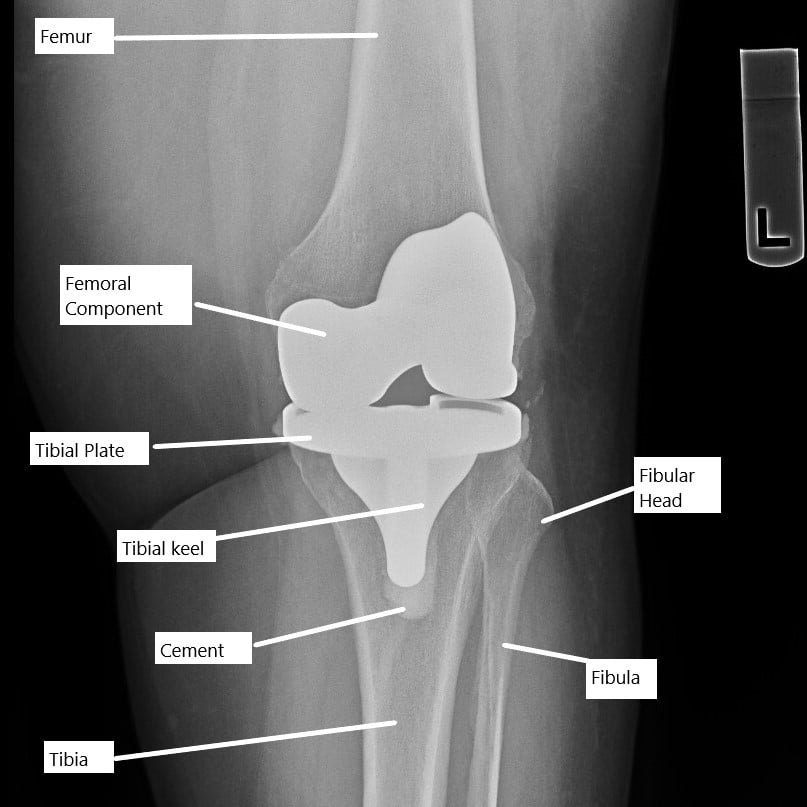Stiffness after Knee Replacement
Knee stiffness following knee replacement surgery is a common concern that can impede recovery and daily activities. While knee replacement surgery is widely successful in alleviating pain, stiffness may occur, affecting the patient’s ability to fully extend or flex the knee. At Complete Orthopedics, we specialize in diagnosing and managing post-surgical knee stiffness with personalized treatment strategies, including non-surgical and surgical interventions when necessary.
How Common It Is and Who Gets It? (Epidemiology)
Stiffness after knee replacement is a known complication, though it is relatively rare. It can affect patients of all ages but is more common in those who have undergone previous knee surgeries or have certain medical conditions such as rheumatoid arthritis, diabetes, or obesity. Stiffness is also more likely in individuals who experience complications during or after surgery, such as infection or improper physical therapy participation.
Why It Happens – Causes (Etiology and Pathophysiology)
Knee stiffness after replacement surgery can be caused by various intrinsic and extrinsic factors:
-
Preoperative Factors: A history of previous knee surgery, limited range of motion before surgery, and multiple comorbidities like diabetes may increase the likelihood of stiffness post-surgery.
-
Intraoperative Factors: Improper alignment of the knee prosthesis, incorrect sizing, excessive or inadequate bone removal, or failure to remove bone spurs can lead to stiffness.
-
Postoperative Factors: Delayed participation in physical therapy, infection, heterotopic ossification (abnormal bone growth in tissues), or excessive blood thinner use can contribute to joint stiffness. Scar tissue formation (fibrosis) is also a significant cause of restricted movement.

X-ray showing a total knee replacement.
How the Body Part Normally Works? (Relevant Anatomy)
The knee joint is a hinge joint that allows for the bending (flexion) and straightening (extension) of the leg. Knee replacement surgery involves replacing the damaged knee surfaces with a metal and plastic prosthesis to restore mobility. Normally, the knee can flex from 0 degrees (fully straight) to about 135 degrees (fully bent). After surgery, a proper range of motion (ROM) is essential for day-to-day activities, such as walking, sitting, or climbing stairs.
What You Might Feel – Symptoms (Clinical Presentation)
The primary symptom of post-surgery knee stiffness is the inability to fully bend or straighten the knee. This is quantitatively assessed by measuring the knee’s range of motion (ROM). Stiffness may be mild, with less than 90 degrees of flexion, or more severe if the knee cannot be straightened by more than 5-10 degrees. Pain, swelling, and difficulty in performing activities such as sitting or rising from a chair or climbing stairs are common complaints.
How Doctors Find the Problem? (Diagnosis and Imaging)
Diagnosis of knee stiffness after surgery typically begins with a detailed physical examination, focusing on the knee’s range of motion. Imaging studies, including X-rays or CT scans, may be used to evaluate the alignment of the knee implant and detect any bone-related issues. If further complications are suspected, MRI may be used to assess soft tissues, including scar tissue or abnormal bone growth.
Classification
Knee stiffness after knee replacement can be graded based on the degree of movement:
-
Mild Stiffness: Limited knee flexion (less than 90-100 degrees).
-
Moderate Stiffness: Knee flexion between 70-89 degrees.
-
Severe Stiffness: Knee flexion less than 70 degrees or inability to straighten the knee properly.
Other Problems That Can Feel Similar (Differential Diagnosis)
Other conditions that may present with similar symptoms include:
-
Infection: Swelling, pain, and redness with limited movement may indicate an infection in the prosthetic joint.
-
Implant Misalignment: If the prosthesis is not properly aligned, it may restrict knee movement.
-
Adhesions or Scar Tissue: Abnormal tissue growth around the knee may restrict movement.
-
Heterotopic Ossification: Abnormal bone formation in the soft tissues can cause stiffness and discomfort.
-
Patellofemoral Pain Syndrome: If the kneecap is misaligned, it may cause pain and stiffness, particularly when bending the knee.

Intraoperative image of total knee replacement.
Do you have more questions?
What exactly causes scar tissue to form excessively after knee replacement surgery?
Excessive scar tissue can form due to a combination of the body’s natural healing process and factors such as the patient’s individual inflammatory response, prolonged immobility, or suboptimal surgical technique. Keeping the joint moving and ensuring proper alignment during surgery can help minimize this risk.
Are there specific risk factors that increase the likelihood of developing stiff TKA?
Yes, risk factors include advanced age, obesity, diabetes, smoking, and previous knee surgeries. Patients with inflammatory joint diseases like rheumatoid arthritis are also at higher risk.
How is the range of motion (ROM) measured clinically?
ROM is measured using a device called a goniometer, which assesses the degree of knee flexion and extension during physical examination.
What is considered a normal range of motion after knee replacement?
A normal range of motion after knee replacement is typically 0 degrees of extension to at least 115 degrees of flexion, though individual outcomes can vary.
Can stiffness resolve on its own without intervention?
In some mild cases, stiffness might improve with regular activity and exercises. However, persistent stiffness usually requires professional intervention
What are the first steps in treating stiffness after TKA if noticed early?
Early treatment typically involves physical therapy focused on mobility exercises, possibly combined with anti-inflammatory medications to reduce pain and facilitate movement.
How effective is manipulation under anesthesia, and what are the risks?
Manipulation under anesthesia is generally effective in improving ROM when conservative measures fail. Risks include fractures, ligament injuries, or increased pain, although these are rare.
When is surgical revision considered necessary?
Surgical revision is considered if both physical therapy and manipulation under anesthesia do not adequately improve ROM or if there are structural problems with the prosthesis itself.
Can changes in lifestyle improve outcomes after experiencing stiffness?
Yes, maintaining a healthy weight, staying active, and adhering to a regular stretching and strengthening routine can improve outcomes and possibly prevent worsening stiffness.
What long-term care is recommended for someone with stiff TKA?
Long-term care includes regular follow-up visits with the orthopedic surgeon, ongoing physical therapy as needed, and continuous monitoring of knee function.
Are there any alternative therapies for treating stiffness?
Some patients find relief through acupuncture, hydrotherapy, or massage, though these should complement, not replace, traditional treatments.
How soon after surgery can stiffness begin to develop?
Stiffness can begin to develop as early as a few weeks post-surgery, particularly if the knee is not mobilized early or adequately.
Is there a genetic predisposition to developing stiffness?
There is some evidence suggesting genetic factors might influence the healing process and scar tissue formation, though research is ongoing.
What advancements in surgical techniques have reduced the incidence of stiff TKA?
Advances include improved prosthetic designs, better precision in implant placement, and minimally invasive surgical techniques that preserve muscle and tissue integrity.
How does patient psychology affect recovery from stiff TKA?
Patient motivation and mental health significantly affect recovery. Depression or anxiety can hinder participation in rehabilitation and negatively impact outcomes.
What are the indicators that a revision surgery might be successful in resolving stiffness?
Good indicators include identifiable mechanical issues with the implant, localized scar tissue that can be removed, or correctable misalignments
Are certain types of knee implants less likely to cause stiffness?
Yes, implants that more closely mimic the natural knee mechanics and those designed for high flexion tend to have lower rates of stiffness.
What role does diet play in recovery from knee surgery and preventing stiffness?
A healthy diet rich in vitamins, minerals, and anti-inflammatory foods can promote healing and reduce inflammation, aiding in the recovery process.
Can stiffness after knee replacement be completely cured?
While it may not always be possible to completely restore the original range of motion, significant improvements can often be achieved through appropriate interventions.
What are the complications of untreated stiff TKA?
Untreated stiffness can lead to chronic pain, decreased mobility, and deterioration of muscle function around the knee. This can severely impact the patient’s ability to perform daily activities and may lead to further surgical interventions.
How can stiffness after knee replacement impact a patient’s mental health?
Limited mobility and chronic pain associated with stiffness can lead to frustration, anxiety, and depression, significantly impacting the patient’s overall well-being and quality of life.
Is stiffness more common in older adults?
Yes, older adults may be more prone to stiffness due to decreased tissue elasticity and slower recovery rates, as well as more common pre-existing conditions such as osteoarthritis.
How does the rehabilitation program differ for patients with stiff TKA compared to typical post-knee replacement patients?
Rehabilitation programs for stiff TKA often require more intensive physiotherapy focused on increasing range of motion. These programs may also be longer and more aggressive, involving more frequent sessions.
What preventive measures can be taken before knee replacement surgery to reduce the risk of stiffness?
Preoperative measures include optimizing the patient’s health through weight management, strengthening exercises, and controlling blood sugar levels in diabetic patients. Pre-surgical physiotherapy can also prepare the tissues and improve outcomes.
What should patients expect during the recovery period to minimize the risk of developing stiffness?
Patients should expect to actively participate in a rigorous physiotherapy regimen, adhere to pain management strategies, and keep regular follow-up appointments with their surgeon. Immediate postoperative mobilization, as guided by the healthcare team, is crucial to minimize stiffness.

Dr. Mo Athar
[et_pb_button admin_label="Button" button_url="https://www.cortho.org/general-appointment/" url_new_window="off" button_text="Schedule an Appointment" button_alignment="center" background_layout="light" custom_button="on" button_text_color="#FFFFFF" button_bg_color="#02770B" button_border_color="#FFFFFF" button_letter_spacing="1" button_font="Arial" button_on_hover="on" button_text_color_hover="#FFFFFF" button_bg_color_hover="#02770B" button_letter_spacing_hover="1" /]
